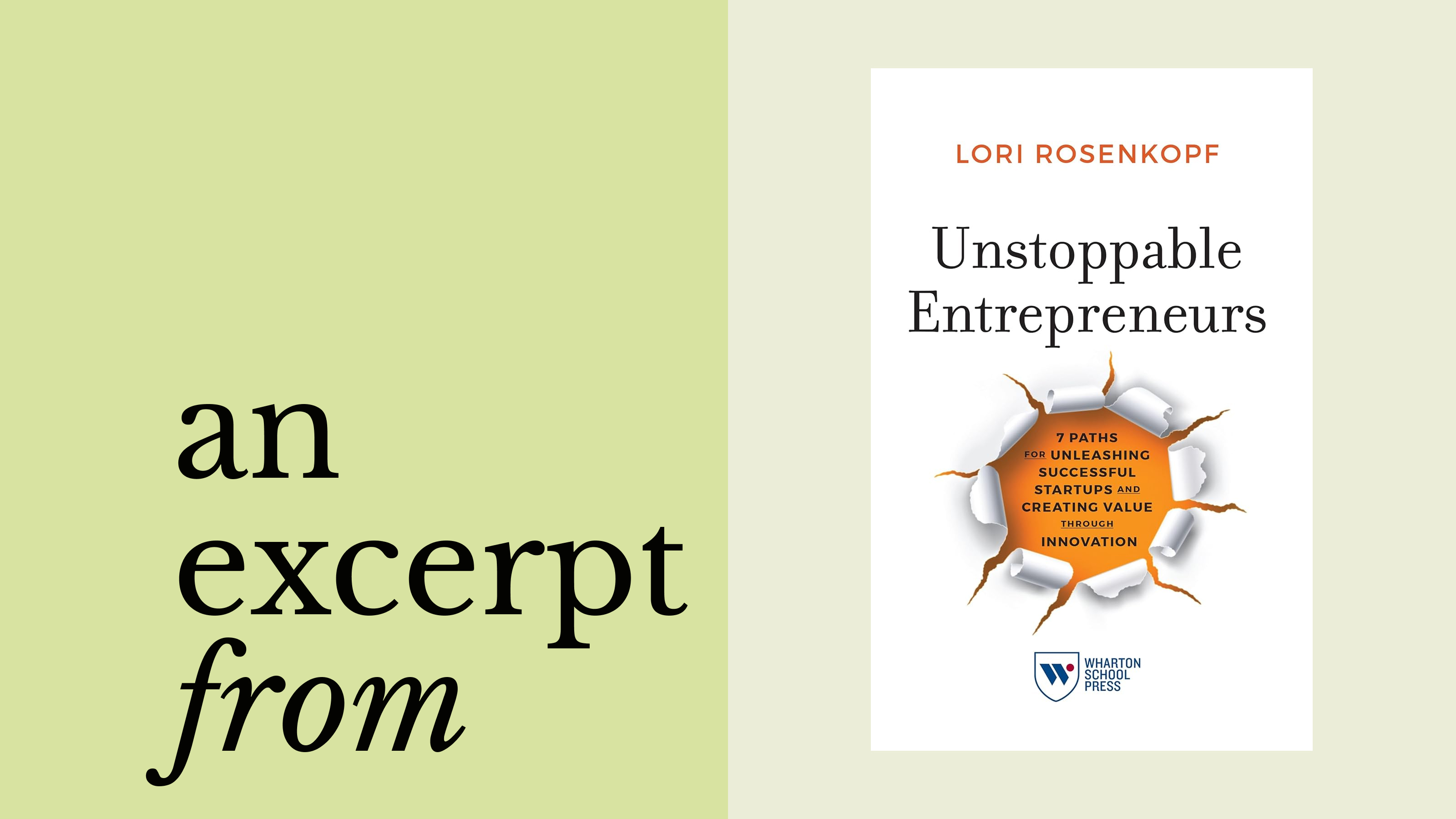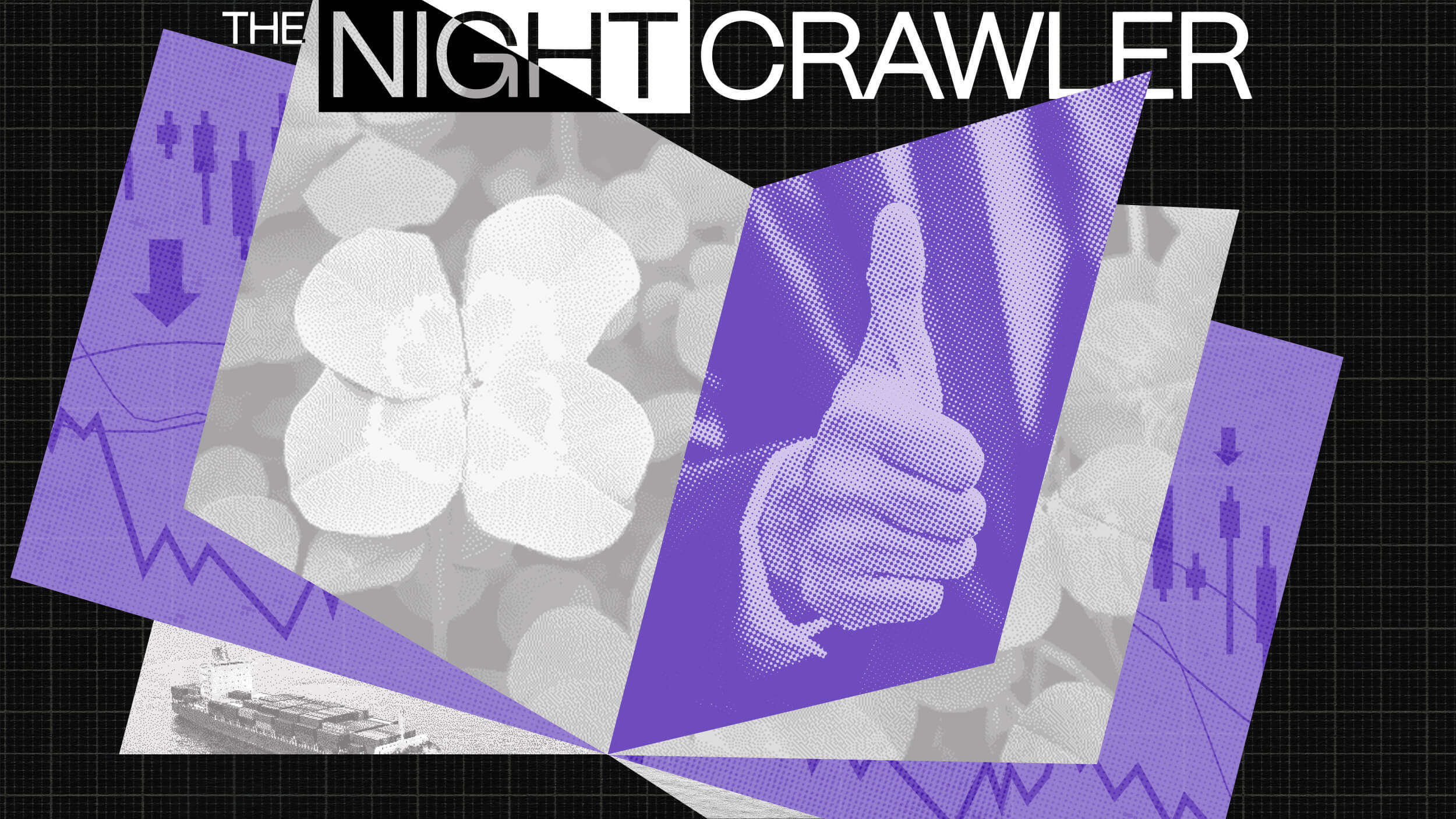A Recap of Our New Content from June 2018

The Big Think+ team is thrilled to present 20 brand new videos!
How does an astronaut bridge cultural divide? This month, take new perspectives on the interesting world we work in with a diverse set of Big Think Experts. Use design thinking with a Global Sales Lead and find true value in your seemingly mundane work with an industrial and organizational (IO) psychologist.
Each lesson title is a link to that video! Please reach out to your Client Success Manager to learn more about implementing any of these videos for your organization.
Our new videos have been categorized into the channels listed below:
- Sales and Marketing
- Talent
- Design Thinking
- Purpose
- Innovation
- Diversity and Inclusion
- Leadership
Sales and Marketing
Selling with Insight: A Different Approach for a Digital World, with Matt Dixon, Global Head of Sales Force Effectiveness, Korn Ferry Hay Group
Learning Path: Identify Growth Opportunities

In the old era, great salespeople were masters of the product; they focused on the features and benefits of what they were selling. Modern salespeople need to offer insight — an informed, comprehensive vision of the risks, challenges, and opportunities that the customer may be missing. In this lesson, Matt Dixon explores the shift from product-based selling to insight-based selling, arguing that the best salespeople today think of themselves as educators.
Selling with Insight: Earn the Right to Have a Proper Sales Conversation, with Matt Dixon, Global Head of Sales Force Effectiveness, Korn Ferry Hay Group
Learning Path: Nurture Customer Relationships
You know that Potential Client X needs what your company has to offer. But to Potential Client X, cold-calls and emails from your sales team are unwelcome nuisances that should be ignored. Nothing you do will succeed unless the person doing the outreach knows how to cut through all the “white noise.” How do you do this? Matt Dixon shares distilled, bite-sized insights concerning how you can add immediate and lasting value to your selling process.
Selling with Insight: The 4-Step Flow of an Insight-Based Conversation, with Matt Dixon, Global Head of Sales Force Effectiveness, Korn Ferry Hay Group
Learning Path: Implement Winning Strategies
It is important to know your customer and to have a detailed sense of their needs and personality. However, an insight-based sales conversation is not a Socratic dialogue, cautions Matt Dixon. In today’s climate, you need to come to the table with an evidence-based hypothesis of what your customer needs from you. Consider similar clients — what are their needs, and how your products and services are meeting them? Think creatively about the needs they (and you) may have overlooked.
Selling with Insight: Don’t Overstate the Capabilities of Your Solution, with Matt Dixon, Global Head of Sales Force Effectiveness, Korn Ferry Hay Group
Learning Path: Act Authentically
No matter how great your company is, it cannot do everything for everybody, says Matt Dixon. And, as a salesperson, you should not pretend that it can. The strength of your client relationships depends on trust, and you build trust through honesty. If the client is asking for something your company does not yet provide, be transparent about that.
Selling with Insight: Separate Personal from Professional When Hearing “No”, with Matt Dixon, Global Head of Sales Force Effectiveness, Korn Ferry Hay Group
Learning Path: Learn to Bounce Back
In sales, “no” is gold, but only if you are paying attention. Great salespeople take rejection professionally, not personally, says Matt Dixon. The fact is that in almost any sales context, your sell-through rate is not likely to be higher than 30%. But, sales leaders do much more with “no” than just letting it roll off their backs — they learn from it. That learning, when properly utilized, translates into sales down the road.
Selling with Insight: Bring Together Sales and Marketing, with Matt Dixon, Global Head of Sales Force Effectiveness, Korn Ferry Hay Group
Learning Path: Collaborate for Success
It is time to heal the ancient rift between sales and marketing, says Matt Dixon. In today’s sales environment, the boundaries between the two roles are more blurred than ever, and smart companies integrate them consciously. Insight sales is the framework that unites them most seamlessly, deploying marketing teams to identify and package the stories of timely, sellable insights, and salespeople to customize the messaging for the individual consumer.
Talent
Use Intuition as a Last Resort: A Case Study in Decision-Making from a Poker Champion, with Liv Boeree, International Poker Player
Learning Path: Using Analytics
 “Trust your instincts!” “Go with your gut!” These popular nuggets of advice appeal to something deep in our nature — a distaste for unresolved complexity. We want solutions, and we want them fast. The trouble is that our brains are notoriously bad at making quick decisions. In this lesson, international poker champion Liv Boeree says a good rule of thumb is to think a problem through as deliberately as you can, then check the logical solution against what your gut is telling you.
“Trust your instincts!” “Go with your gut!” These popular nuggets of advice appeal to something deep in our nature — a distaste for unresolved complexity. We want solutions, and we want them fast. The trouble is that our brains are notoriously bad at making quick decisions. In this lesson, international poker champion Liv Boeree says a good rule of thumb is to think a problem through as deliberately as you can, then check the logical solution against what your gut is telling you.
Helping Your People Love What They Do: Take Responsibility for Activating the Seeking System, with Daniel Cable, Professor of Organizational Behavior, London School of Business, and Author, “Alive at Work”
Learning Path: Honing Your Craft
Who has the real power and the responsibility to keep employees happy and engaged at work? The leadership, management, or the employee herself? You guessed it: All three. When any link of this chain disengages, employees end up demotivated and potentially burned out. When leaders, managers, and employees all invest in making the work purposeful and fulfilling, mindless tedium is not an option. In this lesson, Daniel Cable discusses the powers and responsibilities of the people working at each level.
Selling with Insight: Navigate the Sales Conversation with Soft Skills, with Matt Dixon, Global Head of Sales Force Effectiveness, Korn Ferry Hay Group
Learning Path: Communicating 360
Empathy is always a valuable sales skill, but in insight sales, it is essential. The core of insight selling is the moment when you reframe the challenges and opportunities your potential customer faces. She may have been in business for four decades and may have a clear idea of what her company needs from the kind of products you offer. And, if you are trying to convince her otherwise, says Matt Dixon, your soft skills will make all the difference.
Selling with Insight: Be a Window to the Outside World — Advice for Emerging Salespeople, with Matt Dixon, Global Head of Sales Force Effectiveness, Korn Ferry Hay Group
Learning Path: Honing Your Craft
There is nothing wrong with trying to get your customer’s perspective, but the landscape today is very different, explains Matt Dixon. Clients today do their own deep research and come prepared with questions of their own. However, they are also looking for you, the salesperson, to tell them what should be keeping them up at night. What differentiates your experience from theirs is a 360-degree view of other businesses struggling in different ways with the same challenges they face.
Building Relationships Through Likability: Present Feedback on a Silver Platter (A 4-Part Model), with Michelle Lederman, Connection Instigator, and Author, “The 11 Laws of Likability”
Learning Path: Communicating 360

All too often, the way we offer advice virtually ensures that it will be ignored. “Mood memory” plays a major role in how people process advice — denigrate them, and (at best) they will ignore you. Make them feel good about themselves, and you have a foot in the door. Michelle Lederman’s four-part model for offering feedback “on a silver platter” is designed to ensure that your valuable insight has its intended effect: to make something better.
Design Thinking
Narrow Your Focus: Find Your Path to Progress with Reductionism, with Eric Kandel, Professor of Brain Science, Columbia University, and Author, “Reductionism in Art and Brain Science”
Learning Path: Define

To make meaningful progress on any complex problem, neuroscientist Eric Kandel advises a two-stage approach. First, narrow your focus to a specific aspect of the problem for which you see a viable path. Second, apply a “reductionist approach” — study the problem with a model or in some more rudimentary form that isolates and simplifies it. In this lesson, Kandel explains how he used reductionism to further his own Nobel Prize-winning research on the neurological bases of memory.
Helping Your People Love What They Do: Seeking System Activator 2 — Experimentation, with Daniel Cable, Professor of Organizational Behavior, London School of Business, and Author, “Alive at Work”
Learning Path: Ideate
As a leader, you may be convinced that it is important to keep your employees’ seeking systems activated. You may want them to feel that their unique qualities matter to the organization and that their jobs satisfy their innate curiosity. But, there are tasks that need to be completed for the business to run smoothly. How do you balance these two goals? In this lesson, Daniel Cable argues that you need to establish the frame of expectations within which you can create opportunities for experimentation.
Selling with Insight: Create a Need that Your Client Has Overlooked, with Matt Dixon, Global Head of Sales Force Effectiveness, Korn Ferry Hay Group
Learning Path: Discover & Empathize
What differentiates your company from its closest competitors? And, why should that variation make a difference to your clients or customers? Most people’s ready response to these questions is superficial and hard to quantify. “We’re more people-centric!” “We go the extra mile!” Effective insight sales begins with finding better, more specific answers. In this lesson, Matt Dixon recommends starting with a three-circle Venn Diagram.
Houston, Do You Copy?: An Astronaut’s Guide to Deliberate Listening, with Chris Hadfield, Retired Canadian Astronaut and Author, “An Astronaut’s Guide to Life on Earth”
Learning Path: Communicating 360

Because talking (and listening) are things we learn how to do from a very early age and without formal schooling, it is easy to assume that we are experts. But, since people’s minds move at different rates, our personalities differ, and at any given time we are viewing the world through mood, priorities, and other lenses that may differ radically from those of the person we are talking to. The risks of miscommunication are endless. In this lesson, Chris Hadfield teaches us how to listen deliberately.
Purpose
Helping Your People Love What They Do: Seeking System Activator 1 — Understanding and Playing to Our Strengths, with Daniel Cable, Professor of Organizational Behavior, London School of Business, and Author, “Alive at Work”
Learning Path: Managing Your Journey

Typically, onboarding begins with some cheery words and immersion in the tasks of the new job. What is missing here? The employee is left feeling like a plug-in to fulfill a need, rather than a person whose unique skills and perspective are of value. Unsurprisingly, this has profound consequences in terms of employee motivation and performance. In this lesson, Daniel Cable introduces you to an onboarding strategy proven to boost retention in one of the world’s highest-turnover industries.
Helping Your People Love What They Do: Seeking System Activator 3 — The Why of The Work, with Daniel Cable, Professor of Organizational Behavior, London School of Business, and Author, “Alive at Work”
Learning Path: Discovering Your Passion
Let us be honest: the “meaning” of some jobs is deeper than others. Not everybody is saving the world, one child at a time. But everybody, no matter what job or industry we are in, will be happier and more successful if we know what we are doing every day and why. The data on this is robust. For most of us, a sense of purpose depends upon connecting with the human impact of our work, and leadership can play a huge role in making this transparent. In this lesson, Daniel Cable teaches you how.
Innovation
The Second Machine Age: When Science Fiction Becomes Reality, with Andrew McAfee, Associate Director, MIT Center for Digital Business and Author, “Machine, Platform, Crowd”
Learning Path: Winning through Innovation
 We most certainly live in interesting times. While non-experts are obviously wowed by the emergence of 3-D printing, driverless cars, and other mind-boggling innovations, tech insiders are also universally aware that we are in the middle of a paradigm shift — one that has only begun to gather momentum. Why is this happening now, after a few decades of uninspiring, incremental growth? In this lesson, Andrew McAfee offers three reasons.
We most certainly live in interesting times. While non-experts are obviously wowed by the emergence of 3-D printing, driverless cars, and other mind-boggling innovations, tech insiders are also universally aware that we are in the middle of a paradigm shift — one that has only begun to gather momentum. Why is this happening now, after a few decades of uninspiring, incremental growth? In this lesson, Andrew McAfee offers three reasons.
Leadership
Helping Your People Love What They Do: Improve Performance by Engaging the Biological “Seeking System,” with Daniel Cable, Professor of Organizational Behavior, London School of Business, and Author, “Alive at Work”
Learning Path: Energizing People
 According to a 2016 Gallup Poll, 70% of people are, as the classic pop song puts it, “workin’ for the weekend.” They are disengaged at work. And, a whopping 18% are actively repulsed by what they do for a living. This is not only bad for the workers, but it also is not good for the companies they serve. In this lesson, Daniel Cable argues that organizations must engage employees’ innate curiosity to create happier, more engaged employees.
According to a 2016 Gallup Poll, 70% of people are, as the classic pop song puts it, “workin’ for the weekend.” They are disengaged at work. And, a whopping 18% are actively repulsed by what they do for a living. This is not only bad for the workers, but it also is not good for the companies they serve. In this lesson, Daniel Cable argues that organizations must engage employees’ innate curiosity to create happier, more engaged employees.
Diversity and Inclusion
Communicate Across Cultures: Lessons Learned Aboard the International Space Station, with Chris Hadfield, Retired Canadian Astronaut and Author, “An Astronaut’s Guide to Life on Earth”
Learning Path: Management and Understanding

Cultural differences come down to unconscious assumptions about how things are or how they’re supposed to be. Even within a single family, cultural differences emerge based on generation, gender, and temperament. As the circle widens to other families, cities, states, and nations, these differences multiply. The bigger the differences and the higher the stakes, the more conscious effort is required to communicate effectively. Here, Chris Hadfield offers suggestions for bridging cultural divides.




